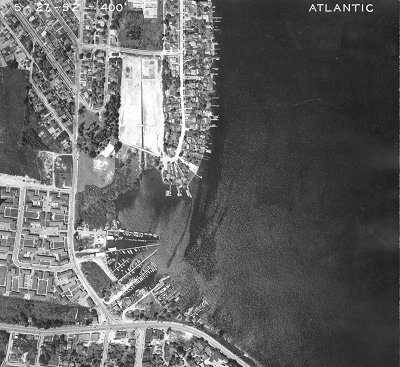From victory gardens to p-patches, Seattle has a long history of community gardening. A straight line links the victory gardens of old with the p-patches, community gardens, and pandemic gardens of today. In particular the idea of vacant land as an untapped resource continues, although such unused plots are harder to find today than they once were. During World War II a cooperative “Victory Garden” was developed in the heart of Seattle’s Ravenna neighborhood, not far from today’s Ravenna Community Center. According to a piece in The Seattle Times, the garden was “serving seven families for a cost of only $3.58 each.” What that amount represented or how it was calculated is not stated.
Victory Gardens abounded around the Seattle area, as they did throughout the nation at war. Framed as a way of easing the strain on the country’s agricultural resources while ameliorating the privations of war on family households, gardening was equally a way of channeling patriotism – something that could be done on the home front.
Most gardens were small scale, home-based efforts which served to supplement household provisions during a time of food rationing. Such was the garden of the Gibbon family in the Pritchard Island neighborhood of Southeast Seattle. However, Americans were also urged to make use of vacant lots, a project that would no doubt take several families working in cooperation, such as that at Ravenna.

Rosetta Gibbon and son Gary tend their victory garden on the shores of Lake Washington, c. 1943. Photo courtesy of Rainier Valley Historical Society.
Victory gardens cropped up on corner lots, in schoolyards, at public housing projects, and on army bases. Some corporations sponsored gardens next to their plants. Japanese Americans planted victory gardens in the camps where they were incarcerated during the war, while their farms and greenhouses back home in the exclusion zone were turned over to others to raise essential vegetables for the war effort.
In 1943 Orrin Hale, chair of the Seattle Civilian War Commission’s Victory Garden Committee called for registering vacant parcels throughout the city:
“There is a great deal of vacant property in Seattle that could be made available for victory gardens to people living in apartments, or homes built on small lots. We are appealing to owners of this property to turn their lots over for cultivation this year.”
The World War II Victory Garden was not a new idea. Similar efforts were made during The Great War although on a smaller scale. The terms “war garden” and “liberty garden” were used often at that time.
 Women's Work
Women's Work
“Women are being urged locally to interest themselves generally in the movement for more and better gardens. While gardening under normal conditions is essentially a man’s job, and every man with the right spirit and with facilities for gardening will roll up his sleeves and get busy, much depends on the women of this city and of the nation to make the greatest success of the movement for war gardens.” (SDT March 17, 1918)
The tone changed little two decades later. Newspaper advertisements featured attractive slacks-clad women planting and hoeing under headlines such as “Every Practical Housekeeper is planting a 1943 Victory Garden.”
Nurseries and “seed dealers” were quick to jump on the bandwagon, offering to “instruct housewives in growing vegetables in home gardens” and coming up with creative packages of seeds, tools, and instruction booklets for the patriotic gardener. And, of course, fashion could not be neglected. A 1943 “article” advertised Frederick & Nelson’s “At Home Week” (“A Thrilling Event Keyed to Victory”). The article features a photo of a smiling young woman wielding a trowel in Frederick & Nelson’s miniature victory garden (third floor.) “Wearing nail-head studded denim jeans, gay plaid shirt and sturdy Mexican huaraches, Mrs. Philip Bronson ‘digs in for victory’.
Interest in home-grown produce waned after the war as women returned to traditional gender roles and food shortages decreased. However, by the 1960s a back-to-the-earth movement brought a resurgence of community gardening and laid the groundwork for the start of Seattle's P-Patch Program in 1973.












.jpg)



